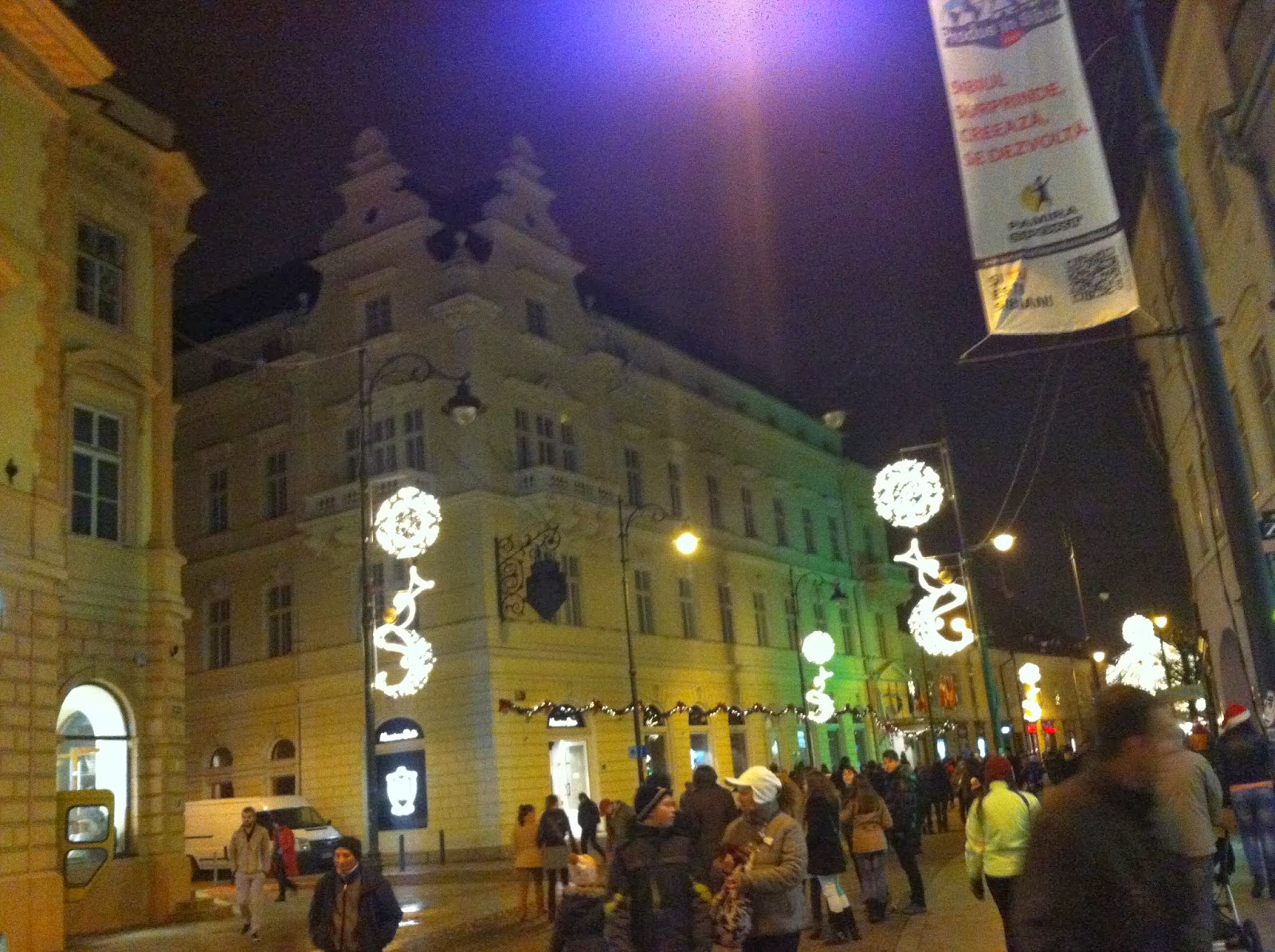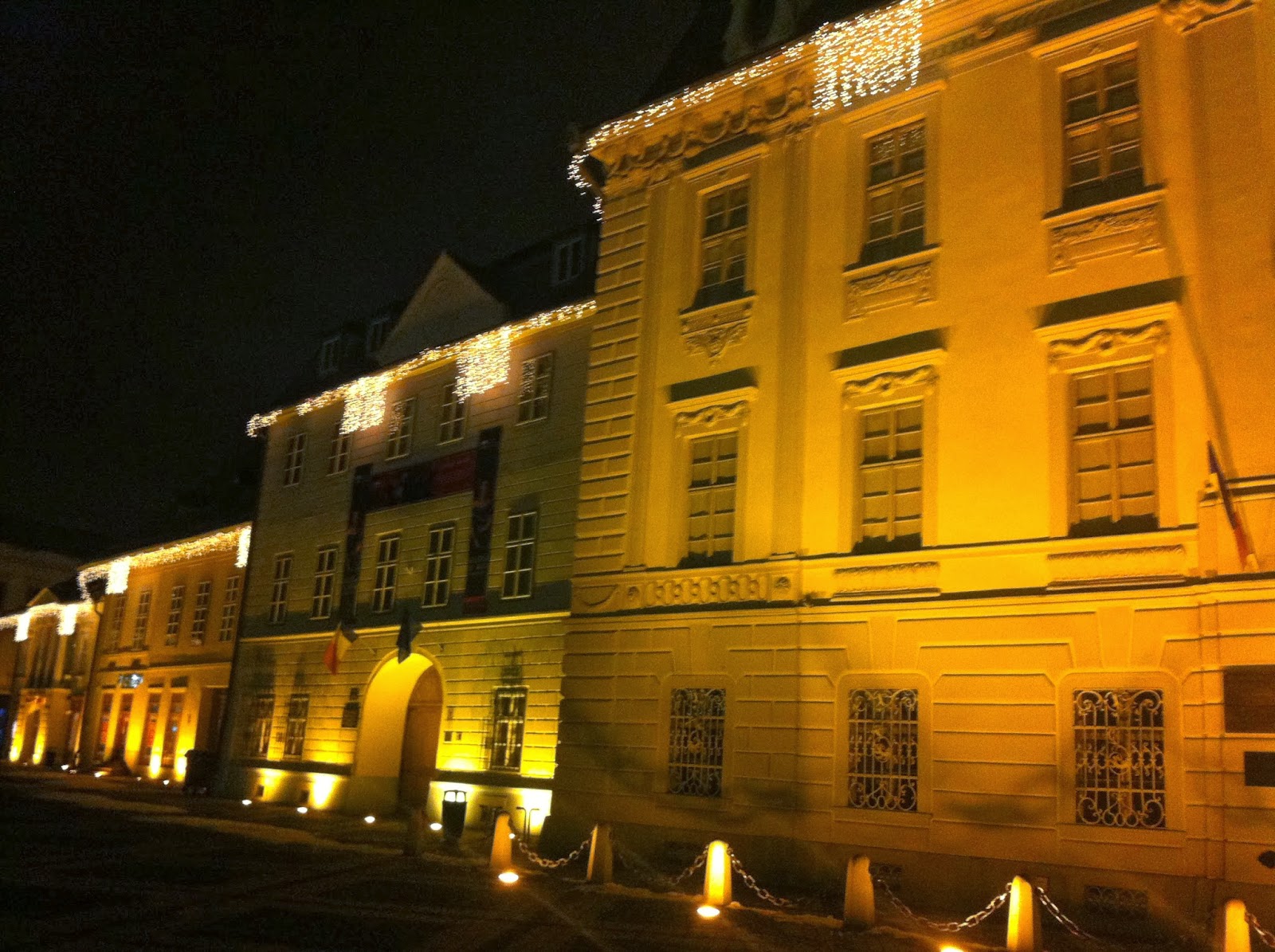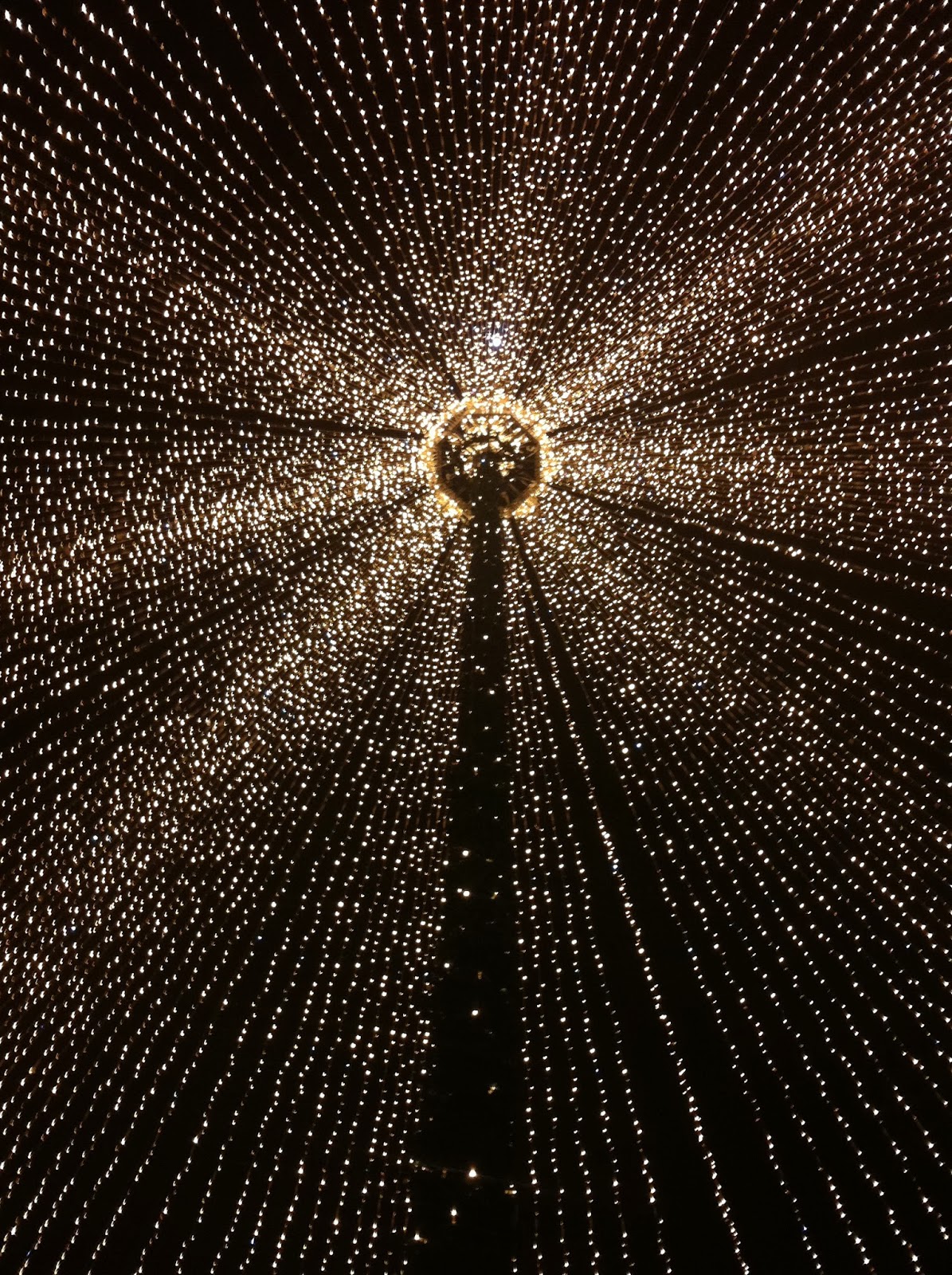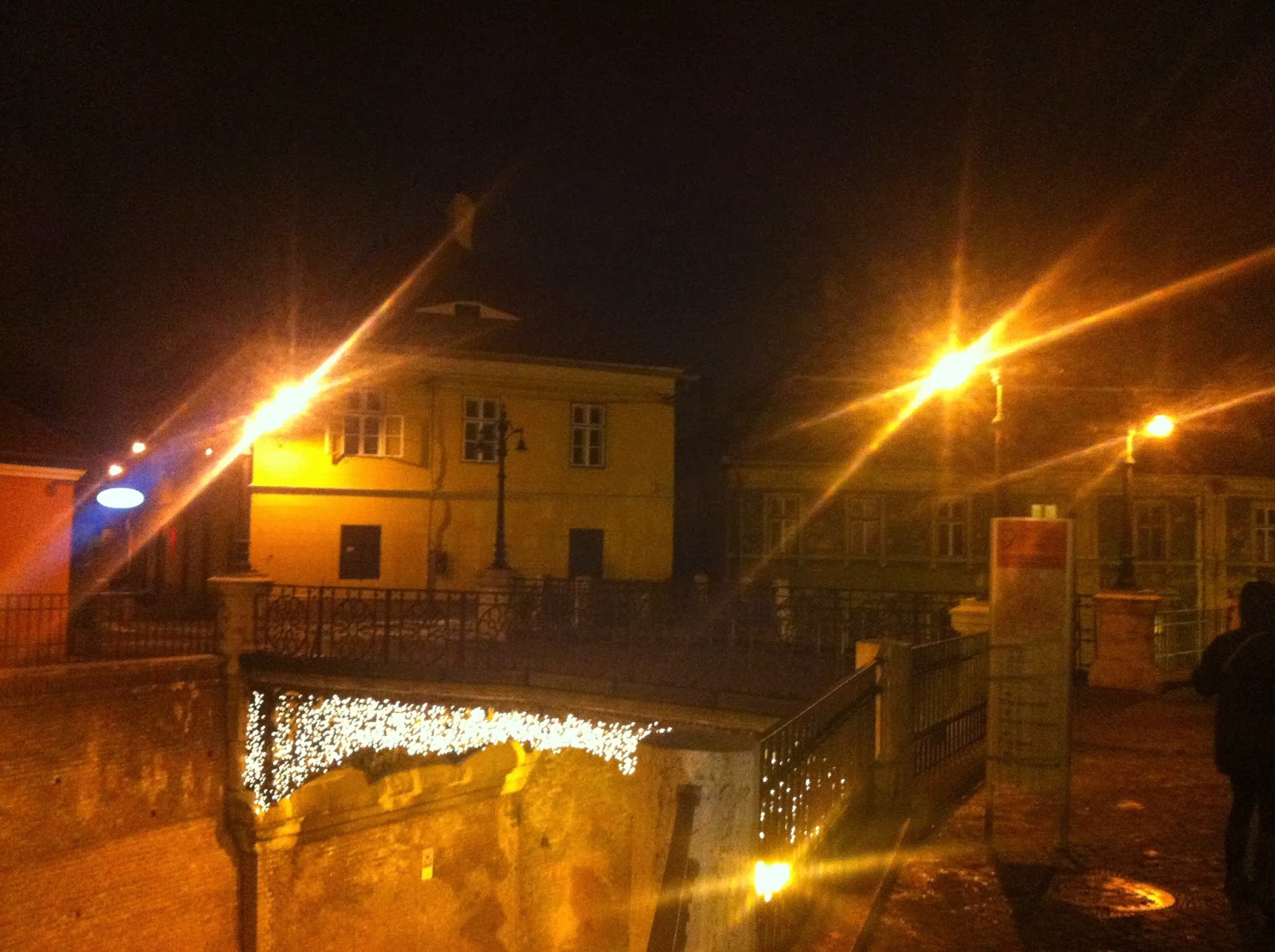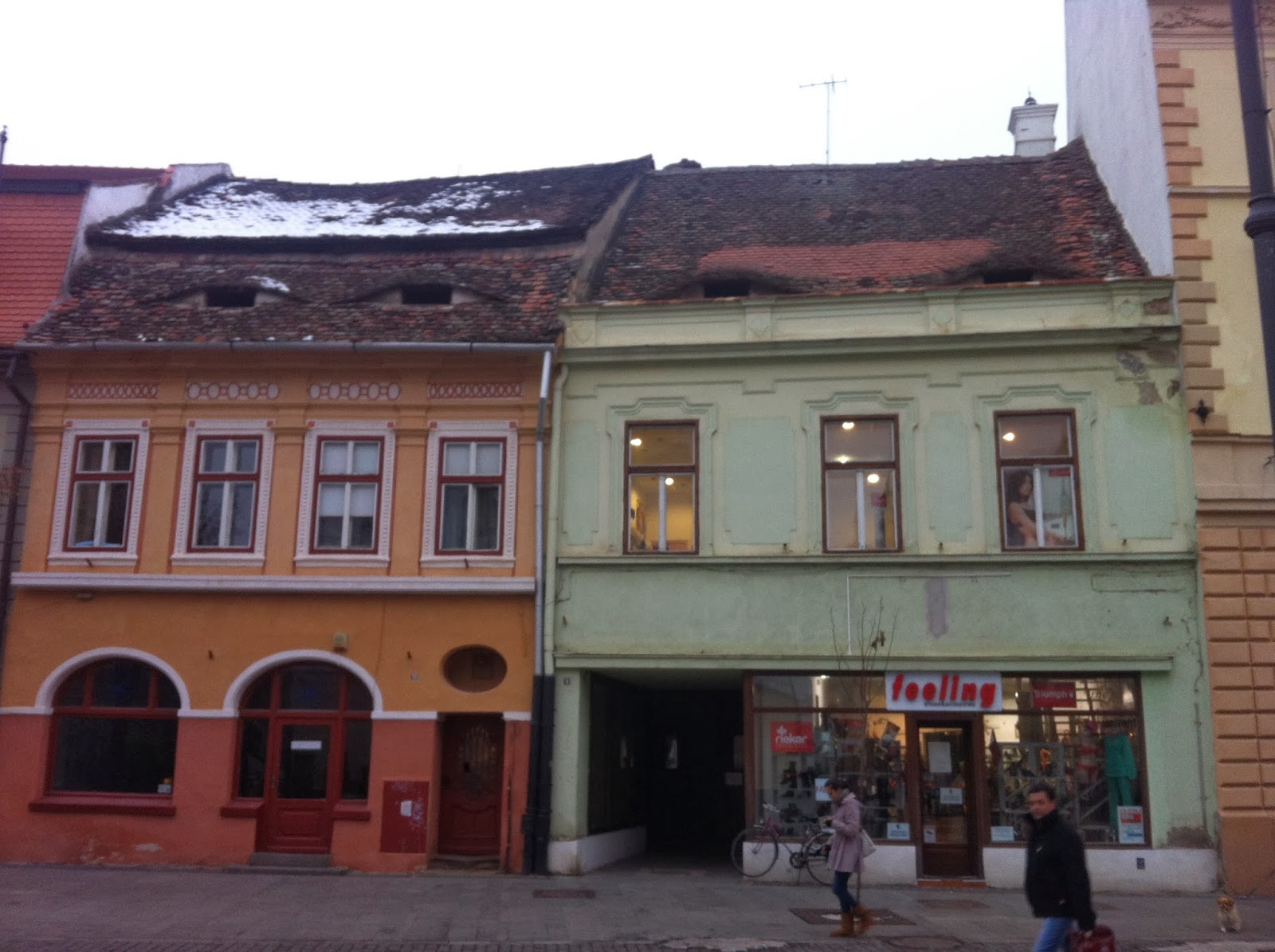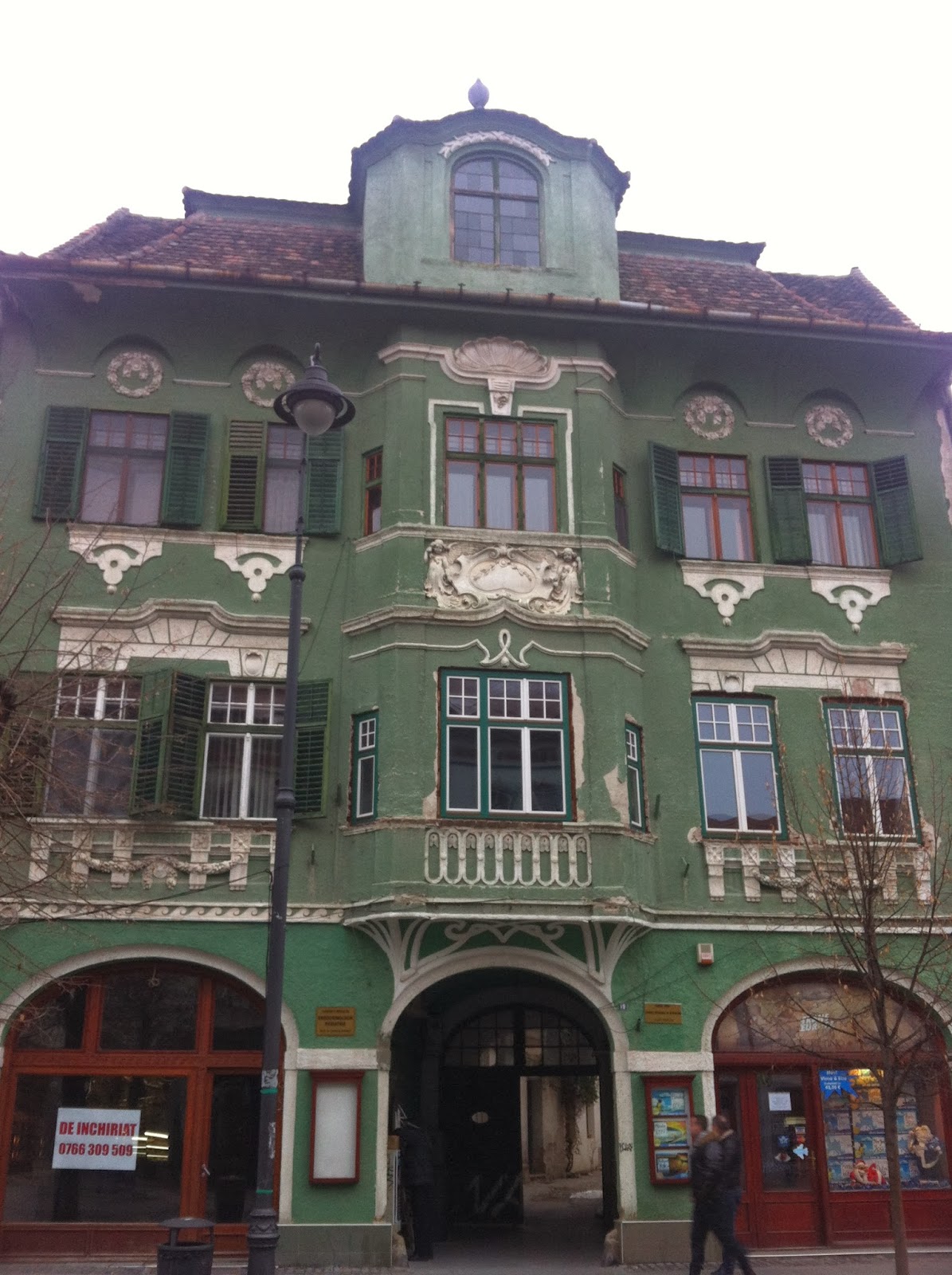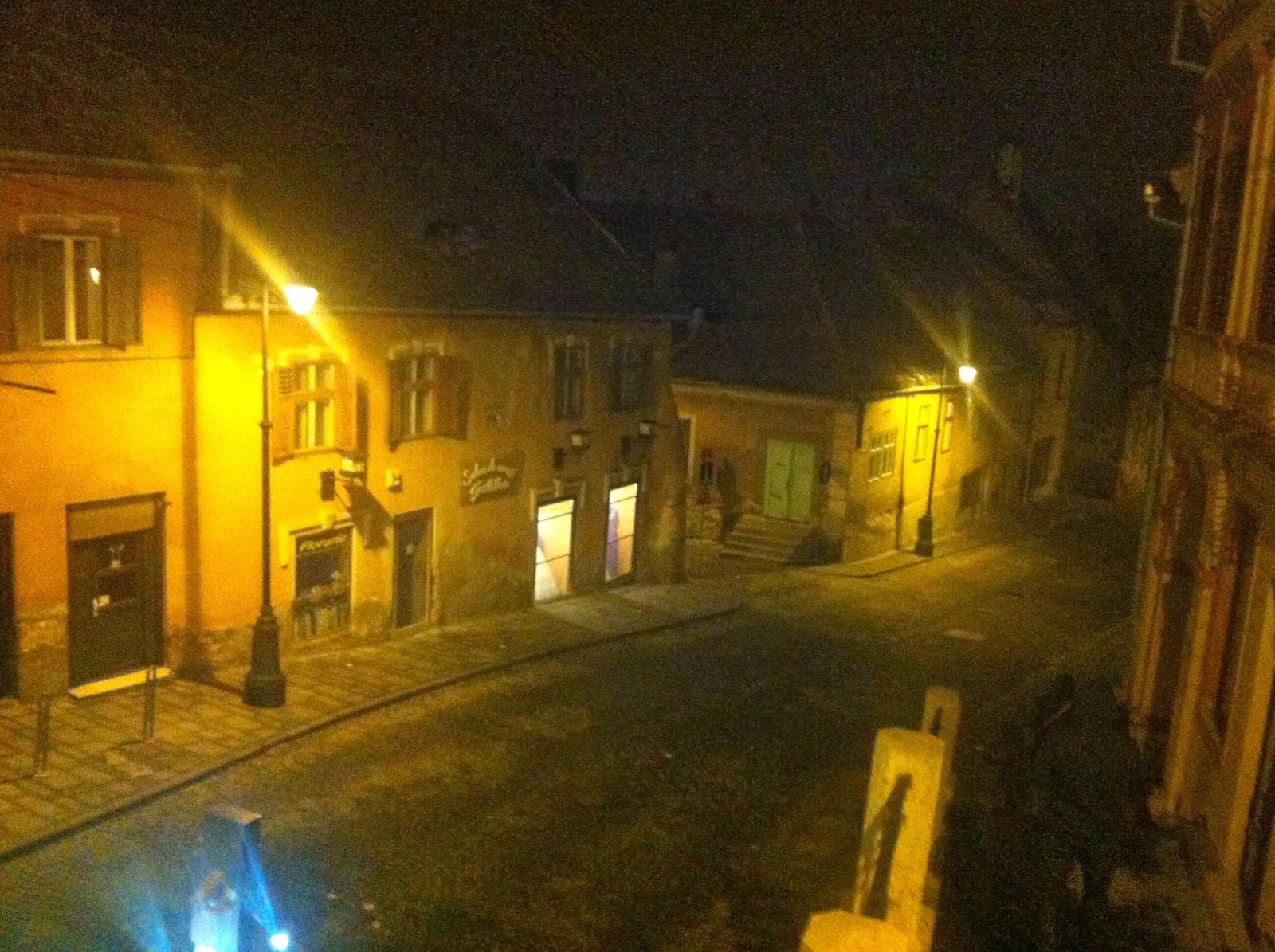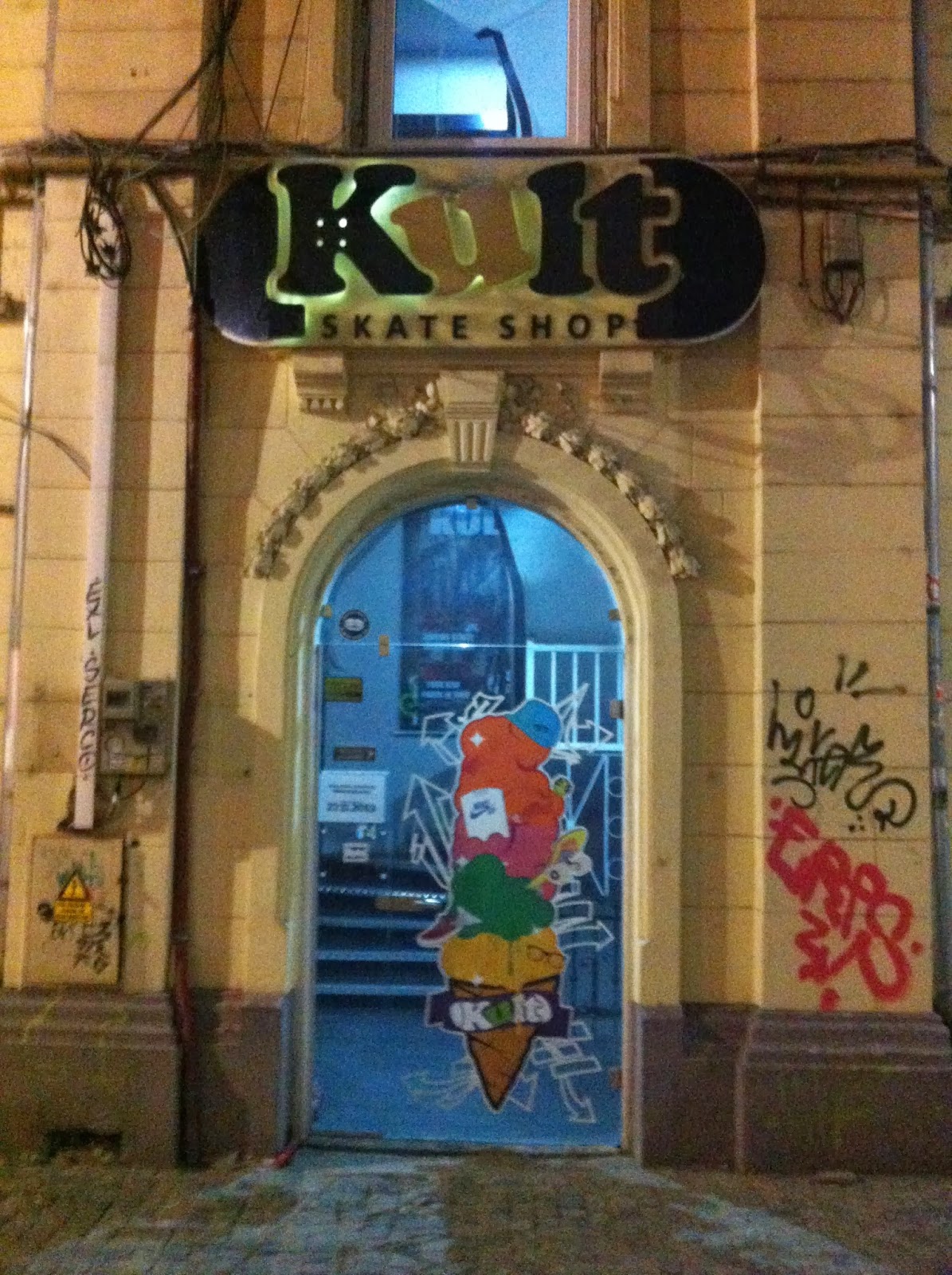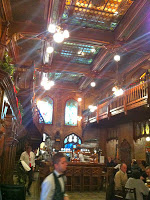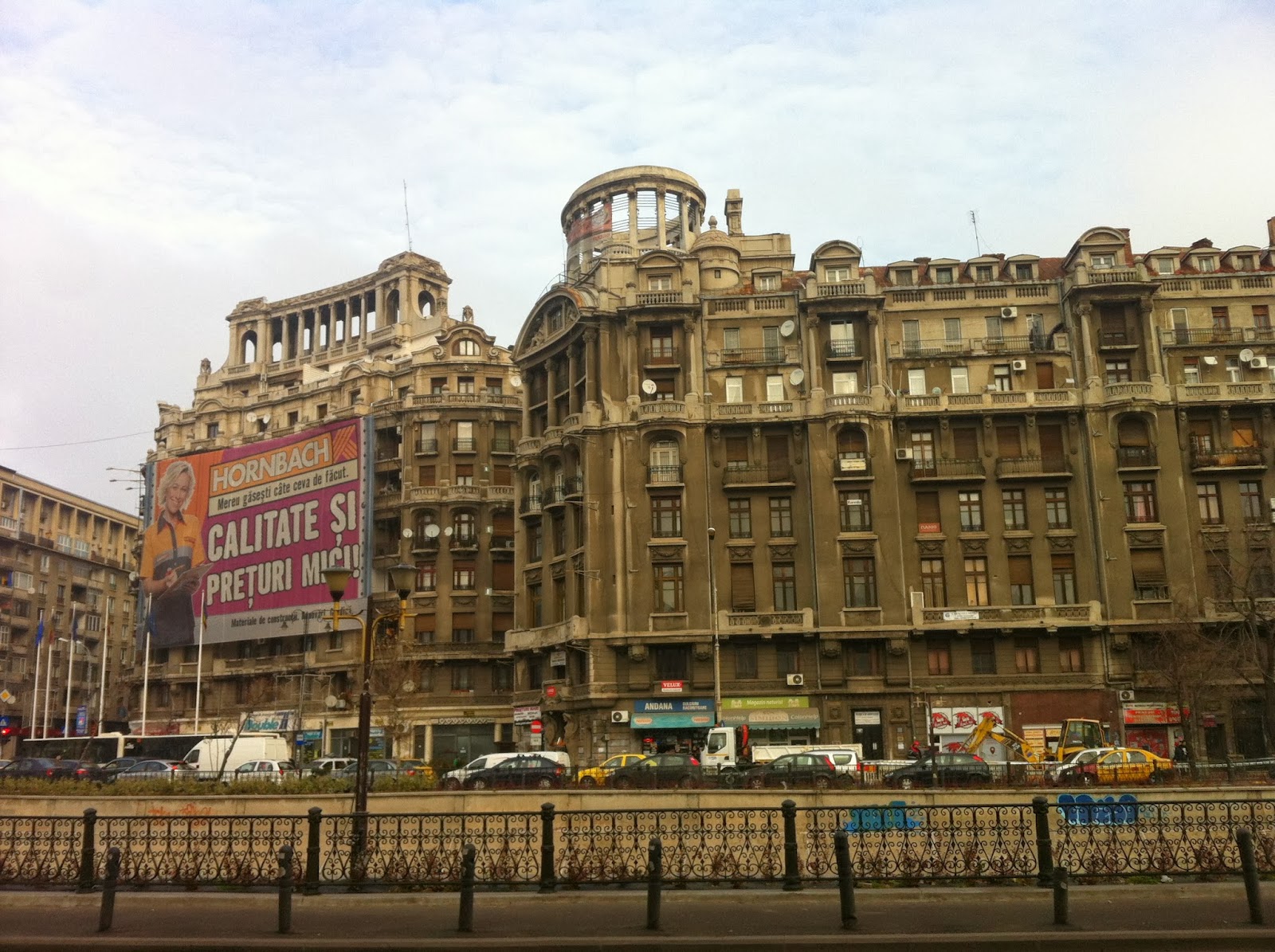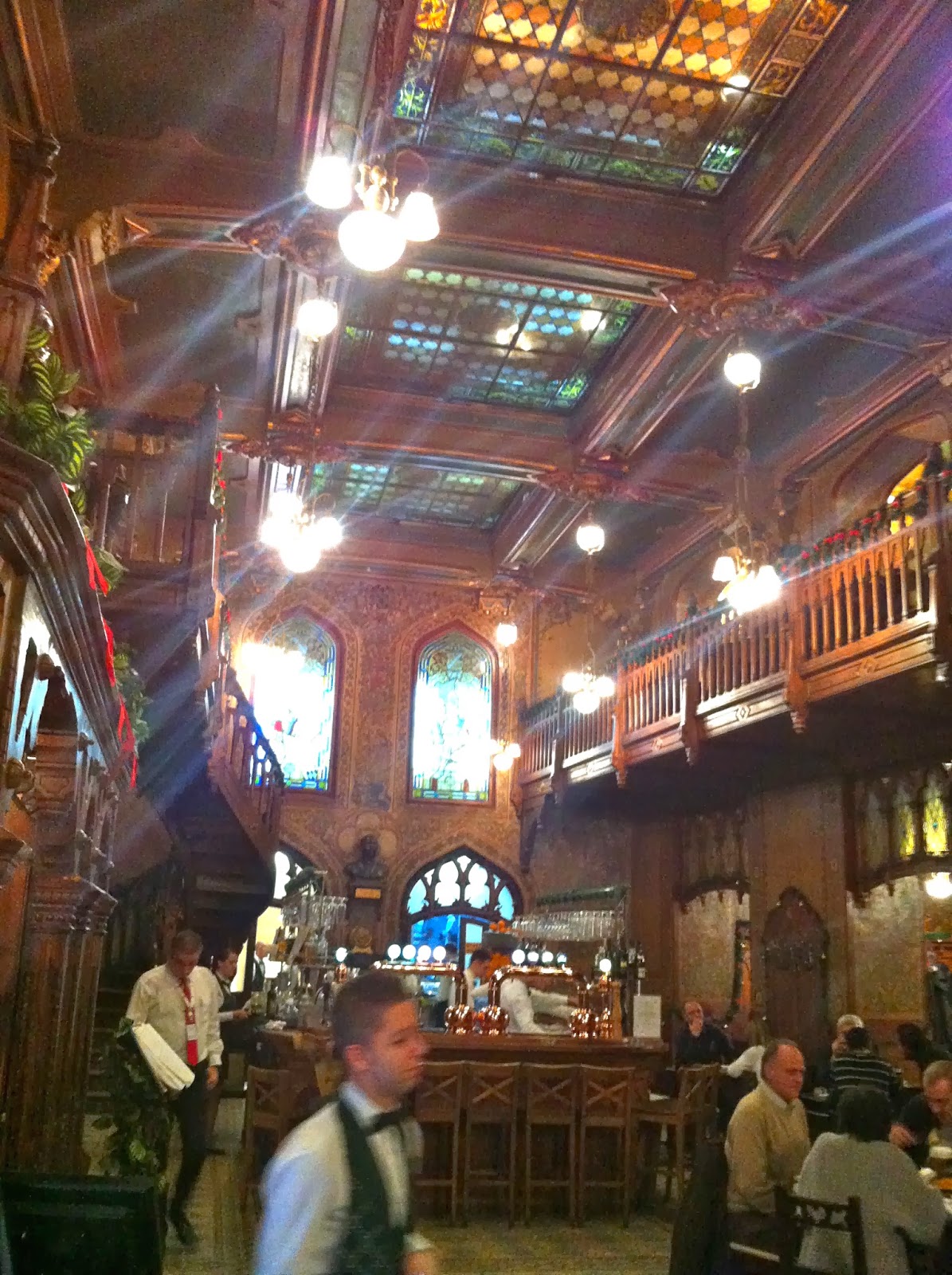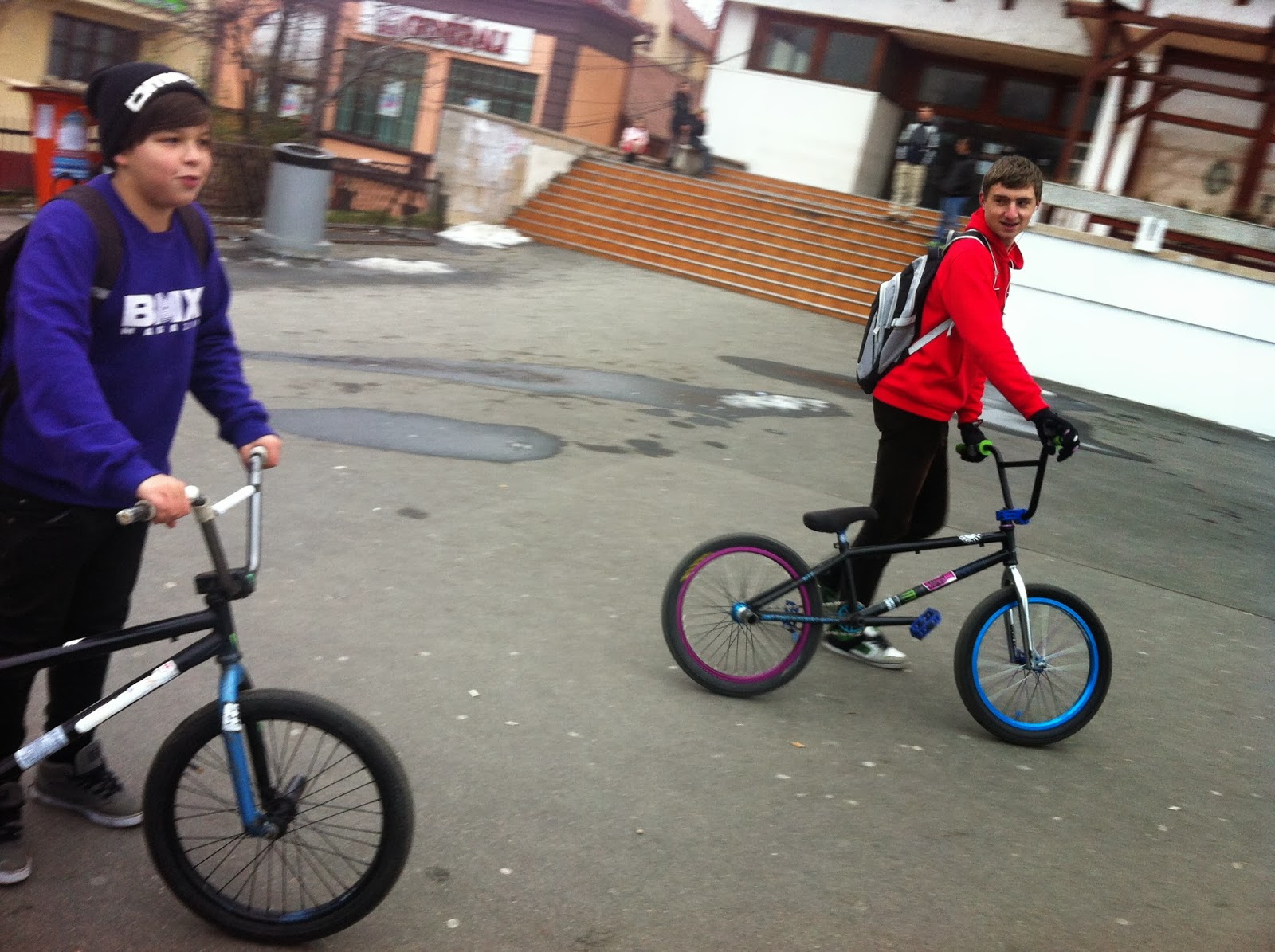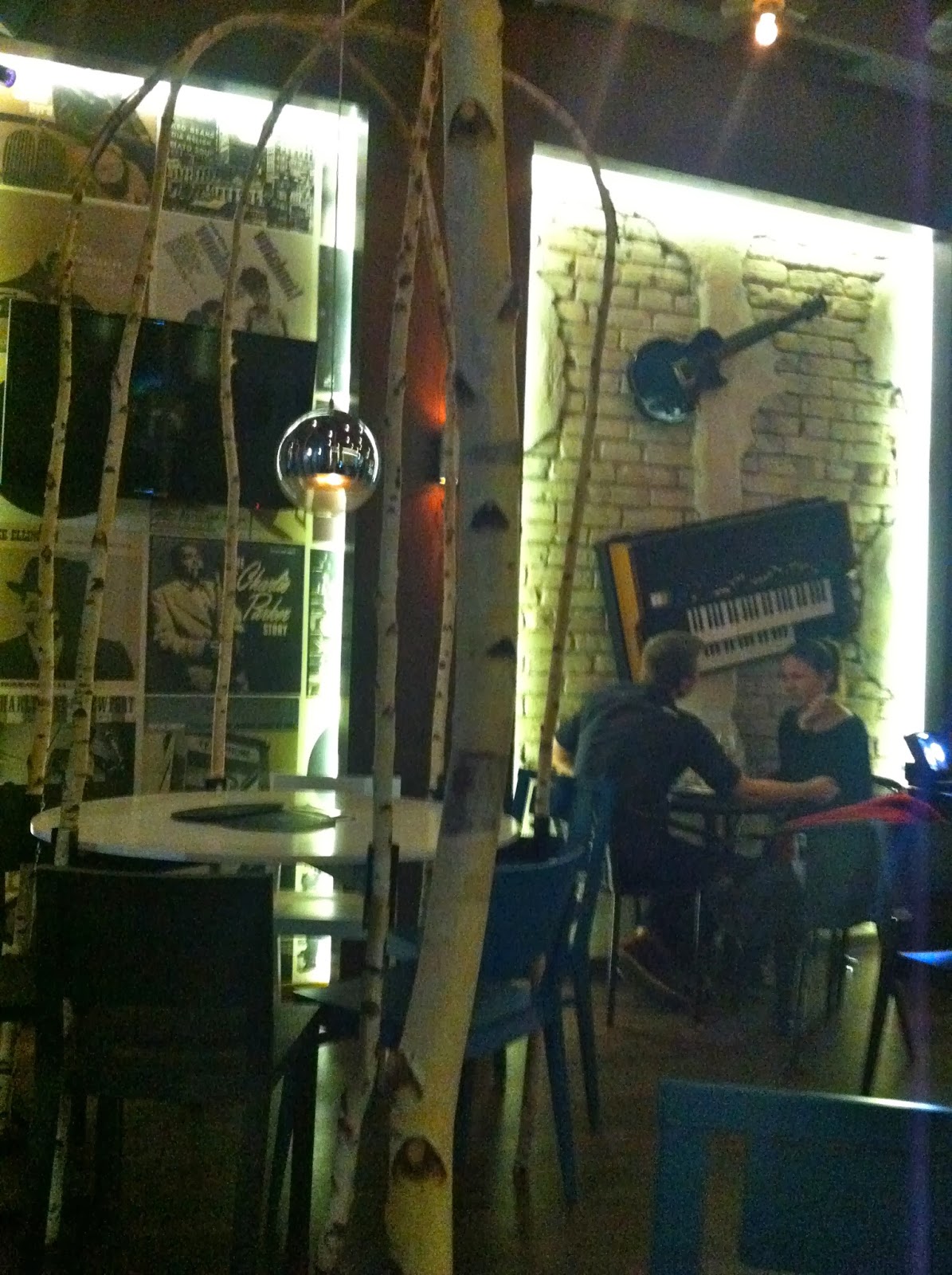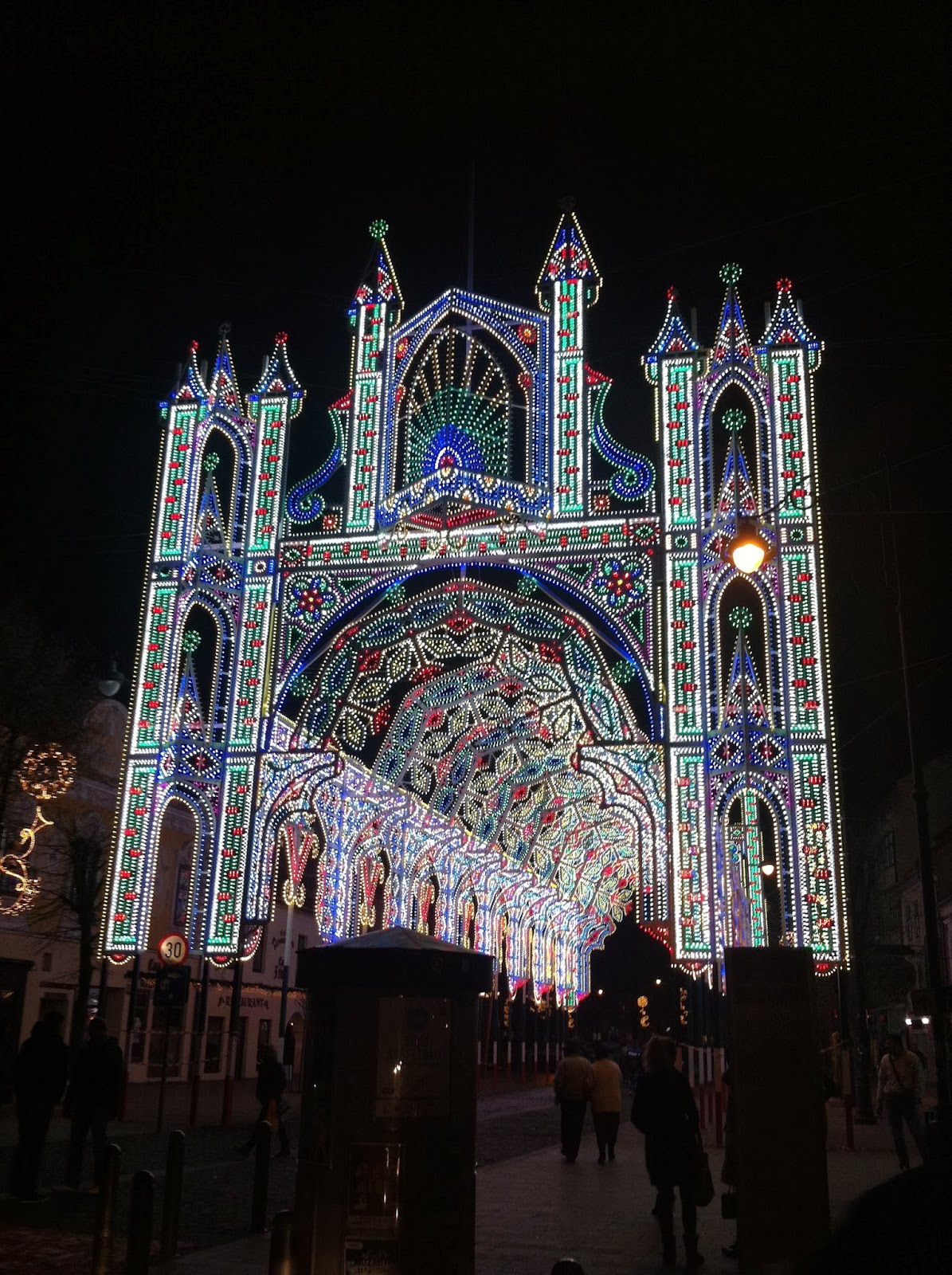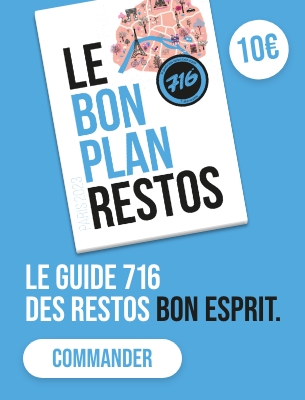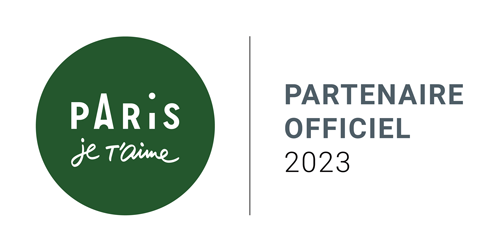Bucharest, Sibiu (Romania) en
06.06.14 - Guillaume - 716lavie
Bucharest
Bucharest, which we used to call Little Paris, was unfortunately disfigured by Ceaucesu. Today, we have huge avenues, just asking to get stuck in traffic , lined with high, grey buildings; needless to say it doesn’t “inciter” to go for strolls. Here we often take the metro or taxis, it’s not rare that 2 metro stations be a 30mins walk away from one another. For someone who’s travelled in numerous big cities, and felt completely at ease in all of them, I had a hard a time getting used to Bucharest; especially since it was winter, in the summer there are a lot more outdoor space and activities available. . Plus, I met a lot of people who lived in Bucharest who thought the city was way too much, everything was too fast, a lot of them also complained about people in the metro ( pushing to get ahead, butting in line: like Paris really) or people driving. That being said, we can’t judge too fast. And like I mentioned before, there’s also lots going on in Bucharest do you might not see at first glance. It’s a city that’s alive with many different cultures, you just have to go looking for them, find them: it’s not that hard, but once again you don’t have THE artistic area where everything is going on. 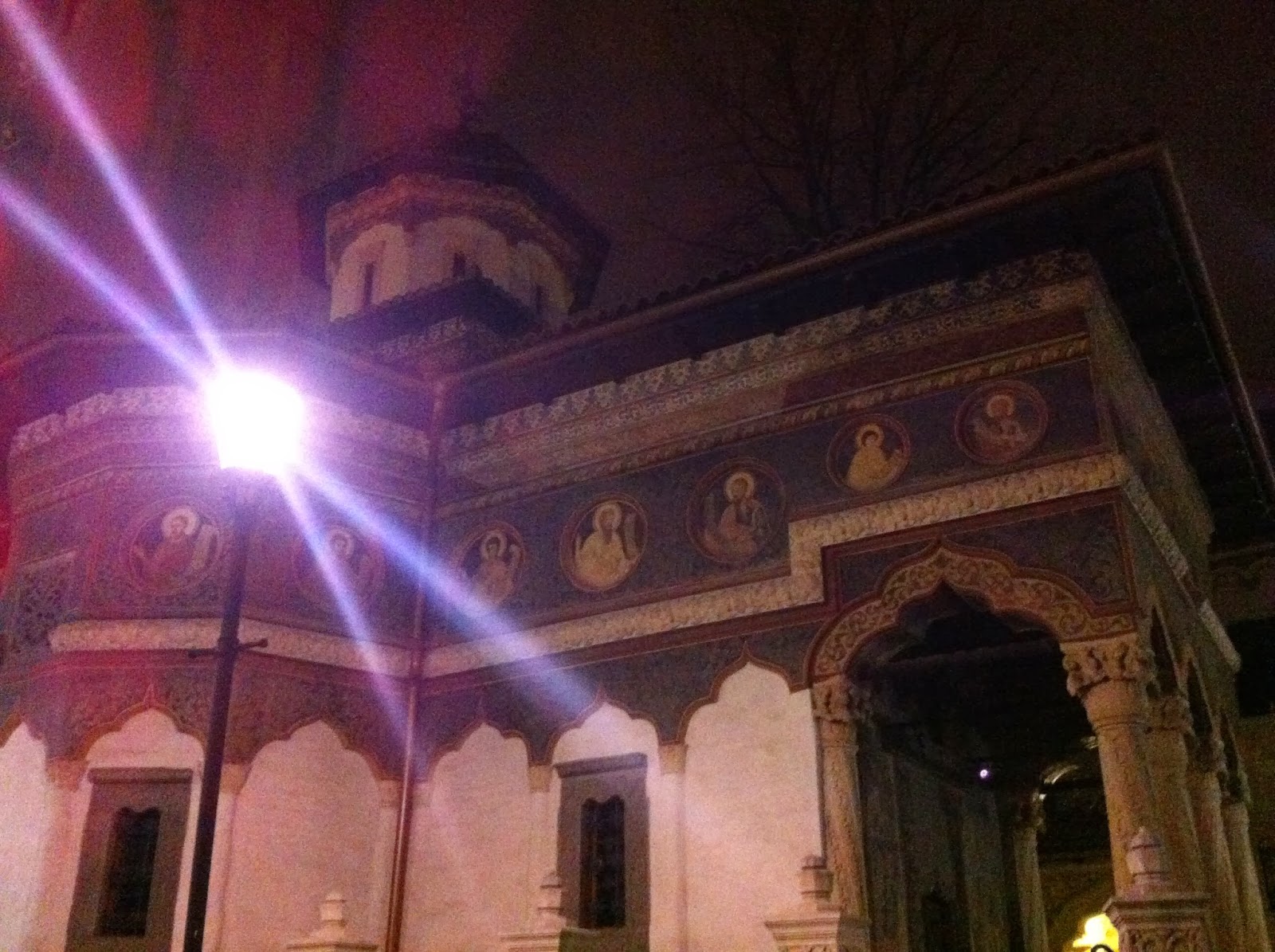

Going there There are direct flights from Paris with La Tarom from around 160 euros. There are special promotions once in a while, the return flight ends up being 80 euros. There are some flights too with Air France. From the airport There’s bus 783 that costs relatively nothing from the airport and brings you right to downtown, the terminus is station Unirii which is a big square 2 steps away from the old Bucharest. We buy the bus tickets at a “guérite” just at the airport exit in front of the bus. Careful, the ticket can also be used to return , so don’t make the mistake of buying a second ticket. To be sure, you can always ask when you take the bus back. In Romania, you don’t buy tickets inside the bus, but in “guérites” outside, it’s not always “evident” Cars are the mode of transportation the most used and there’s always crazy traffic. Romanians actually recommend that tourists don’t take taxis, because it’s not worth it- unless they were reserved- for all these reasons I would recommend using the bus. The 780 goes straight from the airport to the train station.
Phone If you’re like me and like making new contacts, I’d recommend you get a Vodafone phone card. Personally I always buy a SIM card that lets me keep my number throughout my entire trip. Vodafone has a great deal, 35 Lei so 7,50 euros! A bargain! With it you’ll get a number+ 2000 minutes that can be used with any Vodafone user (the companies most used in Romania are Vodafone and Orange), 200 minutes with other company users, 2 hours for international calls, and you there’s a sufficient amount of data with it. Anyways, it’s THE plan to get.
Money If you’re able to take out money free of charge, it’s an advantage because you’re often taking out money here.
Sibiu
Sibiu is located in the center of the country, in the middle of Transylvania, in the mountains. The city was spared by Ceaucescu because his/her (?) son liked going there. Plus, the city was named the Capital of culture associated with Luxembourg in 2007, because of it the city was able to enjoy renovations and further embellishments. Created by German settlers in the 12th century, it became the cradle of Saxon civilization. Here is the city’s information page on Romania’s tourism office’s website. It’s the Romanian city that’s kept the most amount of old quarters, the downtown is pedestrian, walking there is a pleasant thing to do for many. I was there for Christmas, and it was beautiful but during the summer, it’s just as adorable, there are also a lot of tourists.
Bucharest
Paper guides
I used the Bucharest Cartoville
People guides
-free tour From Monday to Sunday from 11am to 1:30pm Meeting spot is at the Unirii square in front of the clock tower, near the fountains. Look for the orange clothes, guide uniforms.
–Florin Arjocuis an independent guide , he’s still getting trained, but don’t hesitate to get in contact with him. He has a good blog in Romanian on Romania: http://drumliber.ro/.
-Valentin Mandache This architecture specialist offers thematic tours of Bucharest that look really interesting: https://historo.wordpress.com/.
716 Selection from the Bucharest Tips website A selection of the best 5 outings and restaurants done exclusively for 716 by George from the excellent site Bucharest Tips.
Sibiu Human guides
Adela Dadu I warmly recommend her, even though I wasn’t able to take a tour with her, but she was very nice, knowledgeable and perfectly francophone. She offers tours downtown, but also in the mountains. She has two sites and translates one of them in French:
Blogs
-Bianca Baln resides in Sibiu and created the site The Chocolates Of Life. She wrote many articles on the surroundings of Sibiu that are very well done: http://thechocolatesoflife.wordpress.com/category/traveling/
She also organizes with her partner some very nice electronic music nights in Sibiu under the name of Hipodrome, in reference to their blog.
-I stumbled on a series of photos of Sibiu in the summer by a French woman, Julie Sarperi, that created the Carnets de Traverse site: http://www.carnets-de-traverse.com/blog/a-faire-a-sibiu
Events
In mid-June there’s Sibiu’s international theatre festival, it’s the third most important theater festival in Europe, after the ones in Avignon and Edinburgh: www.sibfest.ro.
Museums in Bucharest
I didn’t spend enough time in Bucharest because I went to Sibiu right after. That being said, I had made a selection and I benefited from a lot of advice from a lot of people. So here’s a list: -Muzeul Național de Istorie Naturală Grigore Antipa
Șoseaua Pavel Dimitrievici Kiseleff 1, Bucharest 011341
the website
– MNAC (National Contemporary Art Museum)
Izvor St. 2-4, wing E4, Bucharest
Entrance by the Calea 13 Septembrie
the website
– The National Romanian History Museum (Muzeul National de Istorie a Romaniei)
Calea Victoriei 12, Bucharest 030026
the website – The Farmer Museum (Muzeul Taranului Roman), à côté de Antipa
E60 Şoseaua Kiseleff 3, Sector 1, Bucharest 011341
Tel : +40 21 317 9661
the website
That being said, friends from Sibiu preferred the one in Sibiu, bigger and completely in nature, but it’s better to go there on nice days. For the little story, young Romanians explained that there was a time when young people went inside the “countryside” houses of the museum to make out in. 

Restaurants in Bucharest
Caru Cu Bere
Strada Stabropoleos 5
Bucharest
Tel : 021 313 7560
Luca
Bulevardul Unirii (on the big Unirii square, on the opposite side of the mall)
Bucharest
Tel : +40 749 058 377
Past the restaurants, one of the Romanian specialties is covrigul ( covrigi for more than one) that we can eat at Luca or Petru
The restaurants that were recommended to me, but that I didn’t get to try. I wrote down some of the comments from people that told me about them.
Acuarela
40 Polona Str.
010503 Bucharest
Tel : +40 745 662 889
Open Monday-Sunday 11 am- 12 am
the website
It’s an art gallery, a theater and jazz place, a community center, overall a “bistro” for the artistic community of Bucharest.
Barka
Saffron Str. Aviator Sanatescu nr. 1
Bucharest
the website
It’s pretty funny, there’s Indian food, Italian, Thai, a pretty odd mix, in a nice spot. It’s better to go on a week night ( and at night, I like the lighting). Pretty expensive for Bucharest but you eat really well for 10-15 Euros per person. Everyone seems to enjoy it, a simple pub with Asian cuisine.
Beca’s kitchen
Mihai Eminescu 80
Bucharest
Closed Monday
the website
A nice looking little restaurant with home cooking ( natural and fresh). They only offer 2-3 dishes per day, but it’s delicious.
Bon
Smardan 33
Bucharest
the website
Pretty classy French restaurant
Calif
Strada Avrig 63
Bucharest
Tel : +40 748 107 559
the website<br/style=”text-align: justify;”>The best place in Bucharest to eat a healthy Shawarma (there’s a lot of Lebanese food in Bucharest).
Dianei
str. Dianei, nr.4
020972 Bucharest
Tel : +40 745 208 186 Open every day from 12pm-4am Abandoned house taken over by a group of artists which now serves as a bar/ exhibition space the website
Divan
Strada Franceză 46-48, Bucharest
Tel: +40 21 312 3034
the website
A Turkish restaurant that gave me a first good impression when I walked by it, it’s located in front of 55 Jazz Bar ; which was confirmed afterwards when it was recommended to me by a couple people.
Energiea
4, Actor Ion Brezoianu, Sector 5
Bucharest
Tel : +40736374432
the website
A fusion cuisine carefully prepared with the best ingredients, a place for hipsters and the creative types. The design is urban, and it’s in an old printing house. Everybody seems to like it! People are welcoming and you feel at home. Very good for a lunch.
Harbin
12, Paunescu Paltin St
Bucharest
Tel : +401 322 5728
the website
The person that told me about it was talking about the best Chinese food in town, a smoky and full restaurant, but it was apparently worth going there.
Musafir by Amarjit
Calea Rahovei 196
A Uranus-Rahova area, in the Bursa Marfurilor
Tel : 0746 699 274 / 0732 918 735
the website
“This is another restaurant where I love to eat; Indian food, a preference for organic products, a relaxed atmosphere that is well received by busy and active people such as myself.”
Ota
26, București Roumania
the website
At first, this one seemed to be an artist hideout for which you had to know someone on the inside. That’s been changed apparently, and it’s now accessible. A varied clientele of Romanians, but also French, German, English…Ota is the owner of the place and each Thursday he cooks a delicious soup. Reasonable prices.
Shift Pub
Strada General Eremia Grigorescu 17
Bucharest
the website
A nicely located older house , always with good music, very close to the Romana square. Throughout the summer the garden is cool too. It’s one of the best places to get a good soup, the staff is also very warm hearted.However, opinions vary on the place: cool place with a garden for some, ridiculously long wait times for others.
La Vlaicu
Aurel Vlaicu 47
Bucharest
Tel : +40 727 609 699
A hidden garden/ tea salon, that we wouldn’t find if we didn’t know about it.
Sibiu
Crama Sibiul Vechi
Strada Alexandru Papiu-Ilarian
Sibiu
Tel : +40 269 442 374
La Marietto
Calea Dumbrăvii
Sibiu 550324
Romania
Tel : +40 753 384 133
Tango Grill
Piața Mică 23
Sibiu
Tel : +40 754 709 373
The restaurants that were recommended to me, but that I didn’t get to try:
Sibiu
Lucas Super Sandwiches
Piaţa Mare, lângă Palatul Brukenthal Sibiu (also exists in Bucharest and in Timișoara)
the website
Sandwiches that were recommended to me by some friends
Turkish kebab
Sibiu,
Piata Unirii, nr 4 (from the Hotel Ibis, intre Magazinul Dumbrava si sediul Banca Romaneasca
Open every day from 10 am-2 am
the website
Big thumbs up from my friends, unfortunately I didn’t have the time to go try it out.
Coffee shops In Bucarest
Godot Café
Strada Blănari 14
Bucharest
Tel : +40 21 316 1682
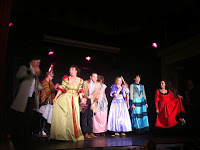
Bars
Romania has some excellent beers, here are some of them: Ursus, Timisoreana, Ciuc, Silva, Nenea Iancu, and we can also sometimes find the delicious German beer Weihenstephaner Vitus.
In Bucharest
55 Jazz Bar
Str. Franceza nr. 9
Bucharest
In Sibiu
Pardon Café Bistro
Str. Cetatii nr. 14 Sibiu
Tel : +40 747 777 222




